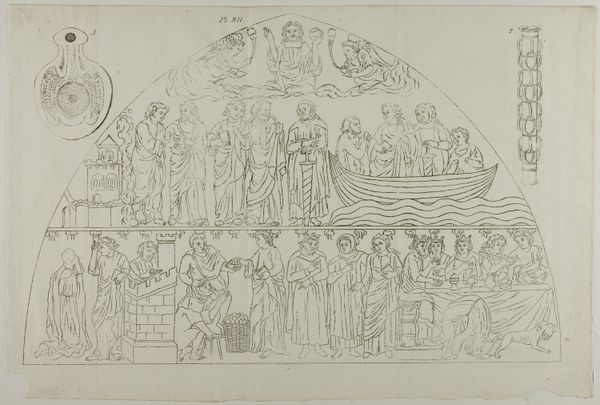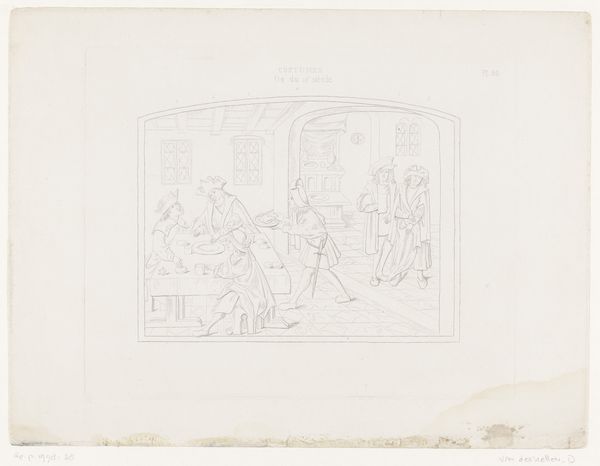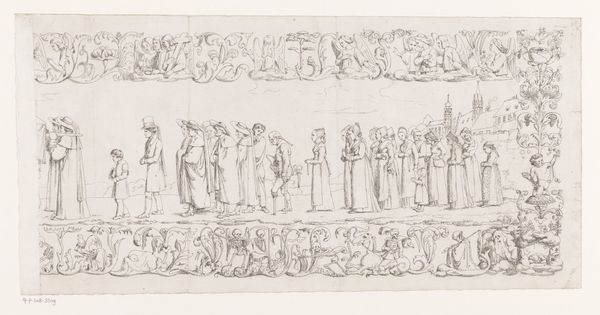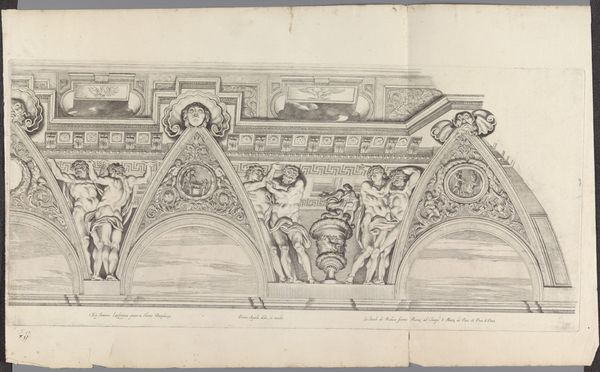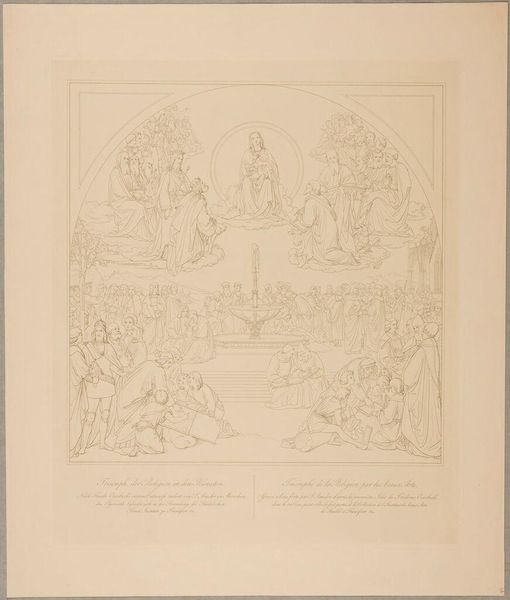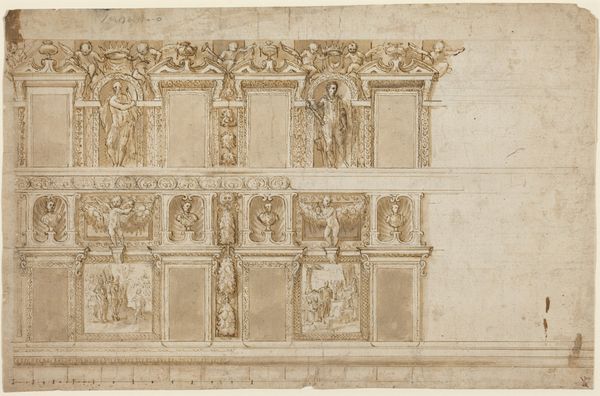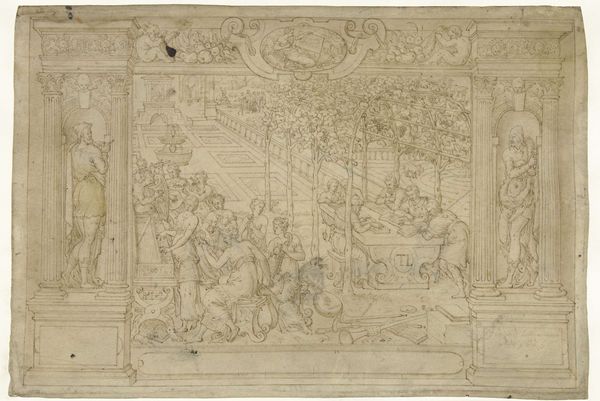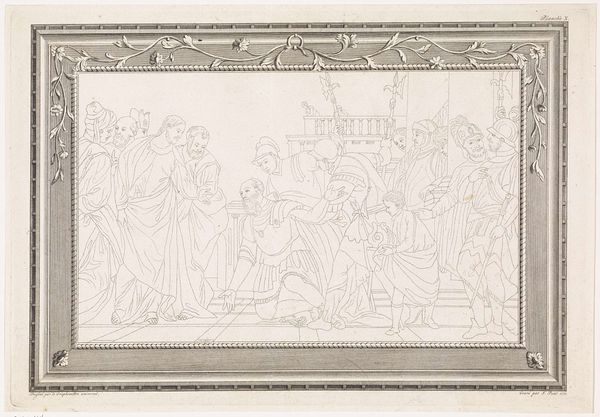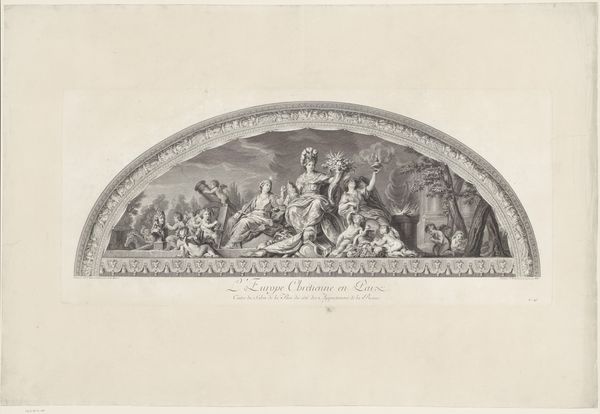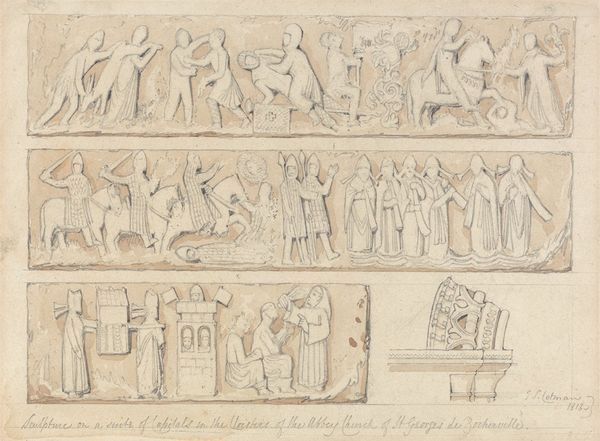
Three Images from Millin's Atlas, plate XII 1807 - 1808
0:00
0:00
drawing, print, etching, paper
#
drawing
#
neoclacissism
#
narrative-art
# print
#
etching
#
etching
#
paper
#
geometric
#
history-painting
Dimensions: 265 × 401 mm (image); 287 × 415 mm (plate); 300 × 435 mm (sheet)
Copyright: Public Domain
Editor: This is Plate XII from Aubin-Louis Millin's Atlas, created sometime between 1807 and 1808. It’s an etching on paper, currently at the Art Institute of Chicago. It looks like a frieze depicting scenes from, I think, a religious narrative. What catches your eye about it? Curator: Immediately, I'm drawn to the process. Etching, a labor-intensive technique, inherently links the creation of images to the physical work involved. Think about the social context. An atlas wouldn't be produced solely for aesthetic pleasure. It was part of a larger knowledge economy, reliant on skilled labor and a network of printers, publishers, and distributors. This particular etching becomes an object of consumption. Do you think this print challenged or reinforced the existing social hierarchies related to art production? Editor: I suppose reinforced, because of who consumed this type of content. How do the materials themselves affect the image's meaning? Curator: The choice of etching is significant. Unlike painting, printmaking allowed for reproduction and dissemination of images, expanding access to historical narratives and artistic styles, which we can assume helped solidify neo-classicism at the time. Consider how the use of paper – a relatively inexpensive material compared to canvas – democratized access to art, albeit within specific societal parameters. And let’s not overlook the socio-economic role the print maker’s labour played in 19th century France, particularly as industrial printing was on the rise. What did this level of accessibility mean for art appreciation and its role in society? Editor: It’s fascinating how much the materials and means of production influenced the spread and reception of these images. Curator: Precisely. It compels us to think about art not as isolated aesthetic achievements, but as products deeply embedded in economic, social, and material realities. Hopefully, that’s a more holistic understanding of this work of art.
Comments
No comments
Be the first to comment and join the conversation on the ultimate creative platform.
